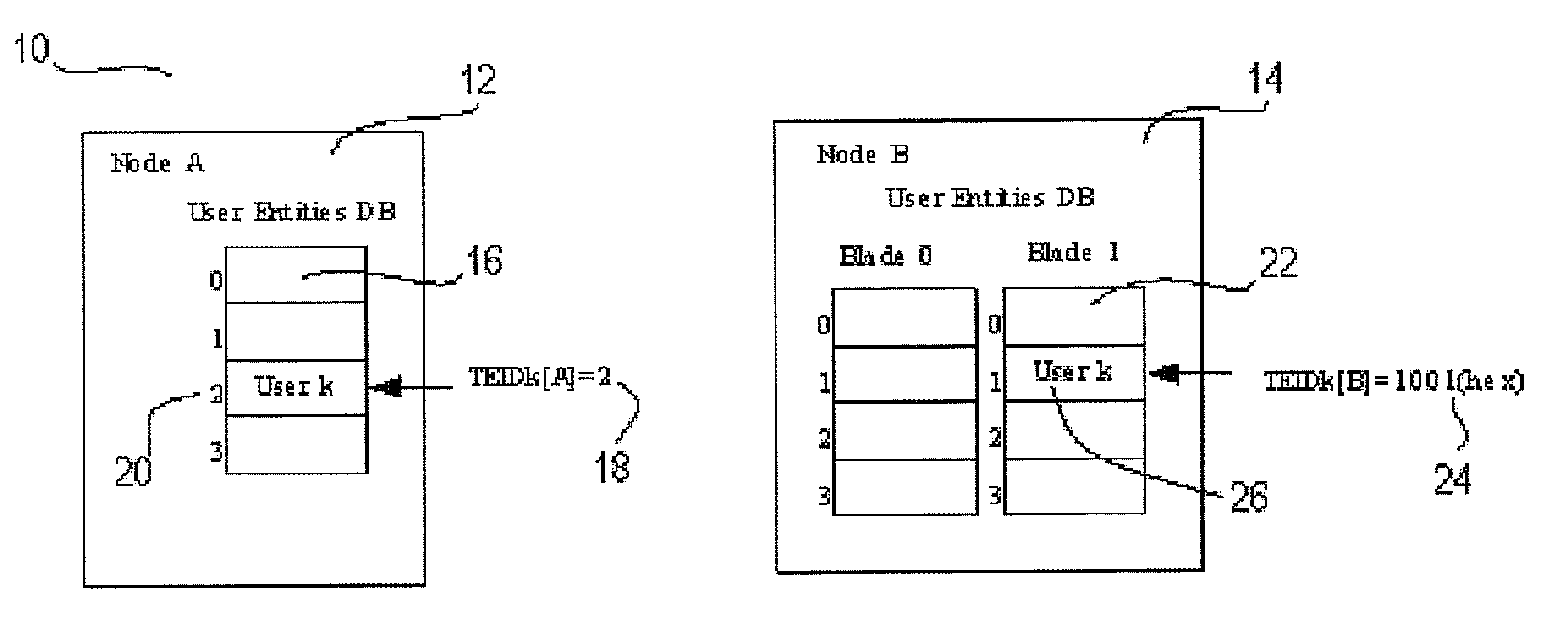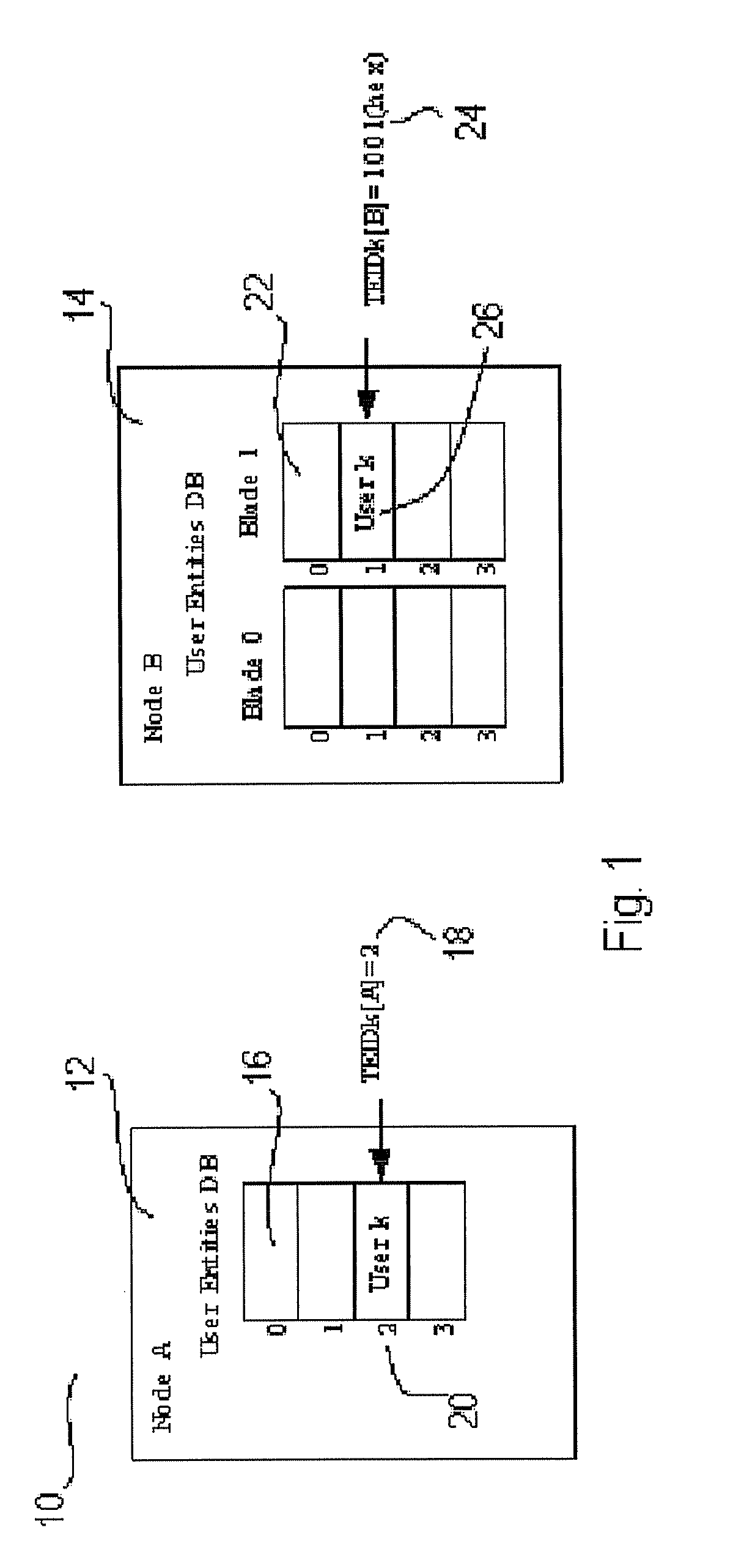Using a cache of outgoing packet identifiers to recover from a protocol error in gtp-u
a protocol error and cache technology, applied in the field of recovery of protocol errors in gtpu, can solve the problems of large search structure, relatively time-consuming, and maintenance protocol disruption, and achieve the effect of reducing the number of search requests
- Summary
- Abstract
- Description
- Claims
- Application Information
AI Technical Summary
Benefits of technology
Problems solved by technology
Method used
Image
Examples
Embodiment Construction
[0026]Reference may now be made in detail to embodiments of the present invention, examples of which are illustrated in the accompanying drawings, wherein like reference numerals refer to like elements throughout.
[0027]In FIG. 3 is shown a tunneling process 300 in which a cache 306 of outgoing packet identifiers is used to recover from a protocol error. As may be seen in FIG. 3, a tunnel endpoint node 302 is forwarding a plurality of user plane data packets 316, 318, 320, and 322 to a tunnel endpoint node 304. The plurality of user plane data packets 316, 318, 320, and 322 may belong to, for example, a user k. While only one direction of user plane data packet transmission is shown in FIG. 3 for purposes of clarity, a substantially symmetrical process may be conducted at the tunnel endpoint node 304 for user plane data packets being forwarded to the tunnel endpoint node 302.
[0028]A transmission information set is created for each of the user plane data packets 316, 318, 320, and 322...
PUM
 Login to View More
Login to View More Abstract
Description
Claims
Application Information
 Login to View More
Login to View More - R&D
- Intellectual Property
- Life Sciences
- Materials
- Tech Scout
- Unparalleled Data Quality
- Higher Quality Content
- 60% Fewer Hallucinations
Browse by: Latest US Patents, China's latest patents, Technical Efficacy Thesaurus, Application Domain, Technology Topic, Popular Technical Reports.
© 2025 PatSnap. All rights reserved.Legal|Privacy policy|Modern Slavery Act Transparency Statement|Sitemap|About US| Contact US: help@patsnap.com



